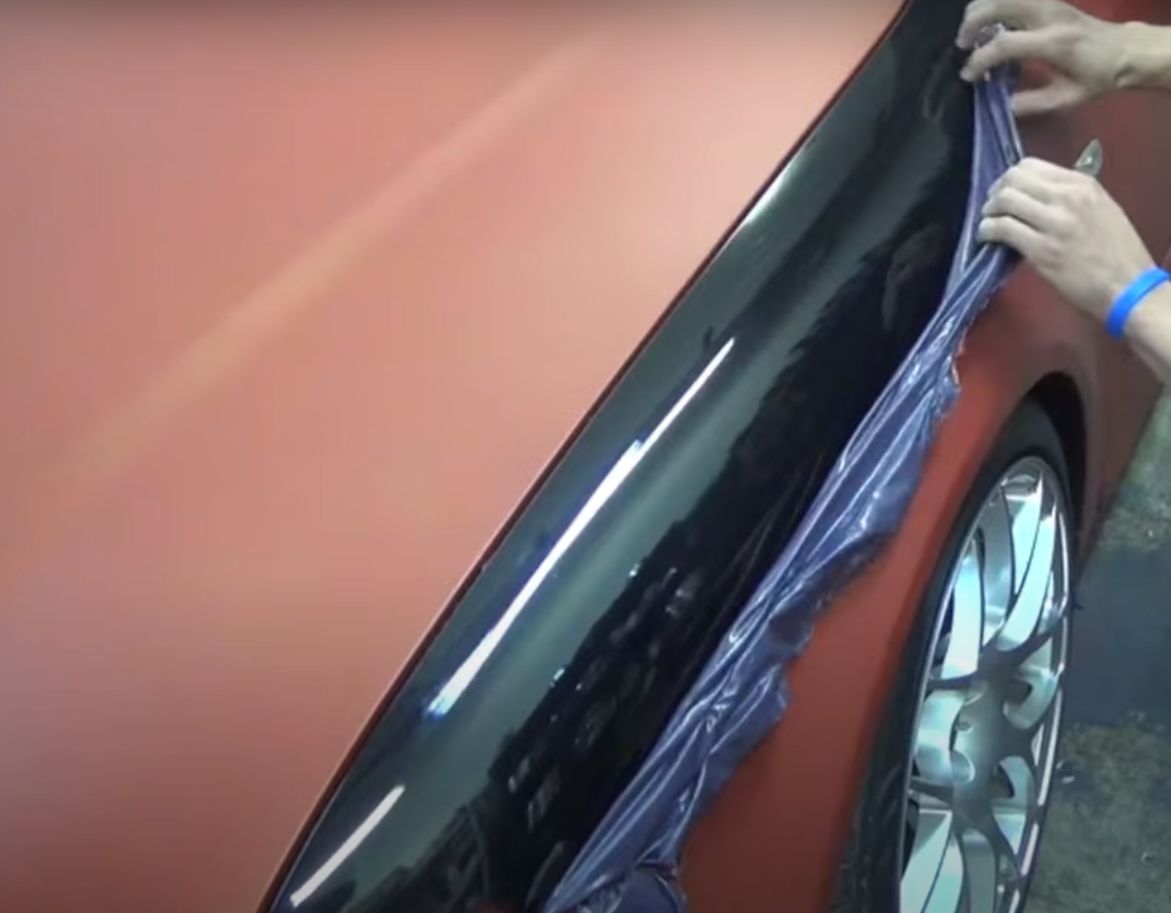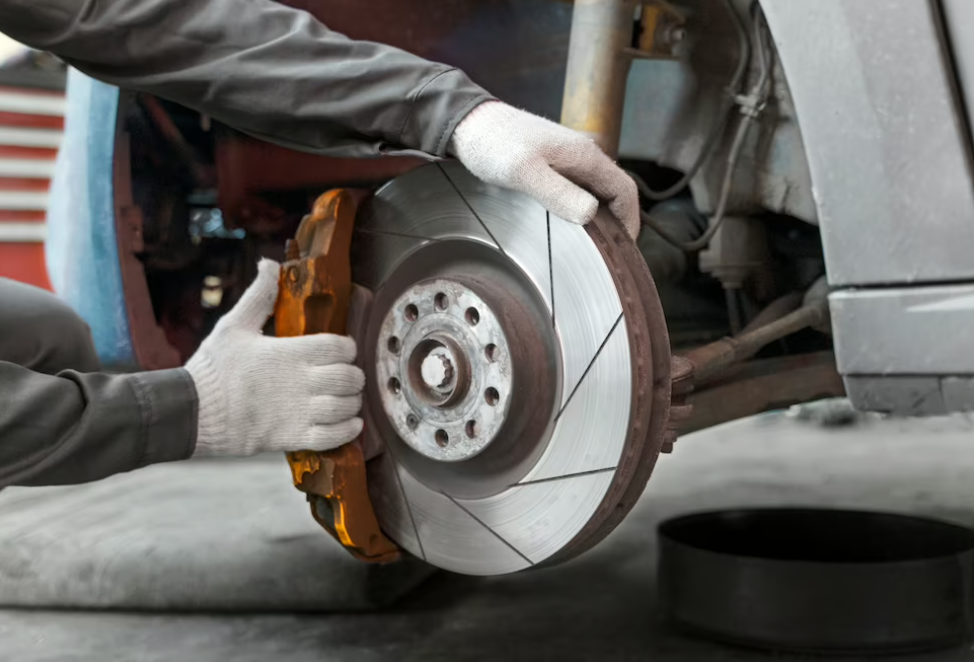How To Remove Spray Paint From Your Car?
Spray paint not only mar a car's appearance but also diminishes its market value. Whether the paint job resulted from vandalism or experimentation, it's advisable to address it promptly to prevent further penetration. Removing it sooner rather than later ensures a simpler removal process without risking damage to the original paintwork.
In this comprehensive guide, we'll explore various methods for effectively removing spray paint from your car's surface and restoring its pristine condition.

Tools And Materials You Need to Prepare Before Removing Spray Pain From Your Car
We're not peeking into your toolbox or garage, so here's a straightforward list:
Tools:
- Pressure washer or a powerful garden hose
- Protective eyewear
- Coveralls
- Mask (optional)
- Gloves
Materials:
- Microfiber towels
- Chenille or lambswool wash mitt
- Your preferred car wash soap
- Paint thinner (if using the solvent method)
- clay bar kit (if using the mechanical method)
- Detailing or lubricant spray
- 3-in-1 cleaner wax
- Wax applicator pad
- Headlight restoration kit (if spray paint is on your headlights)
- Headlight UV protectant
Clean Your Vehicle
Begin by thoroughly washing your car to eliminate any dust, dirt, or debris that might scratch the clear coat or paint during the removal process. If you have access to a pressure washer, it can be particularly helpful in loosening the spray paint, making removal easier.
Using Solvents
- This method involves using chemical solvents like isopropyl alcohol or paint thinner to dissolve the spray paint. However, keep in mind that, depending on the amount of spray paint, isopropyl alcohol may not be potent enough for the job.
- Some recommend acetone, but we advise against it. Accidental spills of acetone on plastic components such as headlights or door handles can cause irreversible damage, so it's best to steer clear of using nail polish remover.
- Before applying paint thinner liberally, conduct a test in an inconspicuous area, such as near the rear tire. If the paint thinner causes any discoloration or tinting, refrain from using this method.
- Assuming the test yields positive results, apply a small amount of paint thinner to a clean microfiber towel. Avoid direct application to the car's surface to prevent potential damage to the clear coat or paint job. Gently rub the affected areas with moderate pressure, as it's the chemical reaction of the solvent, not excessive scrubbing, that removes the paint. You don't need to exert excessive force for this task.
- Once satisfied with the solvent's efficacy, thoroughly rinse your car with a high-powered hose nozzle or pressure washer to remove any residual solvent that could potentially harm the paint job. Follow up with a 3-in-1 cleaner wax to provide a protective layer.
- Buff out the wax with a clean microfiber towel before it completely dries to achieve a glossy finish.

Mechanical Technique
- This approach involves using physical means to eliminate paint rather than relying on solvents.
- Utilize a pressure washer to dislodge and eliminate as much spray paint as possible without harming the car's original paint.
- Shape your preferred clay bar into a thin, workable disc.
- Apply detailing spray or a similar clay bar lubricant generously to the affected area.
- Gently rub the spray paint with moderate pressure to eradicate it.
- As the clay bar accumulates dirt, turn it over or fold it to expose a clean surface, continuing to spray and scrub until the spray paint is completely gone.
- Employ a 3-in-1 cleaner wax to further polish and remove any residual discoloration or minor surface scratches left by the spray paint.
- While the cleaner wax is still slightly hazy but not completely dry, use a fresh microfiber towel to buff it off, revealing a flawless shine, and apply a protective layer of wax.
- For spray paint on headlights, apply lubricant and use the clay bar. If ineffective, follow the manufacturer's instructions for a headlight restoration kit.
- Once all the paint is removed, apply a UV protector to the headlights.
When tackling car maintenance, safety is paramount. Here's a checklist to ensure your well-being and cleanliness throughout the process:
- Protective Gear: Wear appropriate gear to shield your skin, eyes, and clothing from chemical exposure.
- Ventilation: Work in a well-ventilated area whenever dealing with chemicals to minimize the risk of respiratory issues and headaches.
- Handling Chemicals: If chemicals come into contact with your skin, eyes, or mouth, promptly follow the manufacturer's instructions for safe cleaning or flushing. In the event of accidental ingestion, consider contacting poison control for guidance.
- Keep Chemicals Secure: Store all chemicals and solvents out of reach of children and pets to prevent accidental exposure.
- Proper disposal: Consult local regulations for the safe and legal disposal of all chemicals used in the process. Avoid simply discarding them in the trash or pouring them down the drain, as this could pose environmental hazards.

- Avoid Abrasive Materials: Stick to soft microfiber cloths to prevent scratching the paint.
- Use Chemicals with Caution: Test rubbing alcohol or acetone in a small area first to avoid damage.
- Seek Professional Help if Unsure: Don't hesitate to consult experts for stubborn paint or uncertain situations.
- Ensure ventilation: work in well-ventilated areas to avoid inhaling fumes from solvents.
- Protect Yourself: Wear gloves, eye protection, and masks when handling chemicals.
- Be Patient and Thorough: Take your time to ensure complete removal without harming the paint.
Should I remove wet spray paint from my car?
It's advisable to remove wet spray paint promptly before it dries. Wet paint is easier and quicker to remove compared to dried paint.
How can I remove dried spray paint?
Apply a small amount of vegetable oil or baby oil to the dried paint using a cotton ball. Gently scrub with a washcloth or nail brush until the paint is gone. Wash hands afterward to remove any oil residue.
Does WD-40 remove paint from cars?
WD-40 can soften traffic paint without damaging the vehicle finish. For heavy accumulations or paint that has dried for several days, apply a generous amount of Vaseline to the dried paint and leave it overnight. Repeat if necessary.
Removing spray paint from your car requires patience and care, but with the right approach and materials, it's entirely possible to restore your car's paint job to its former glory. By following the steps outlined in this guide and taking proactive maintenance measures, you can keep your car looking its best for years to come.
Click on the following link to read another blog post: How To Dispose Of Motor Oil?













